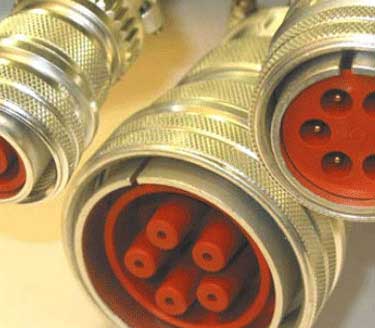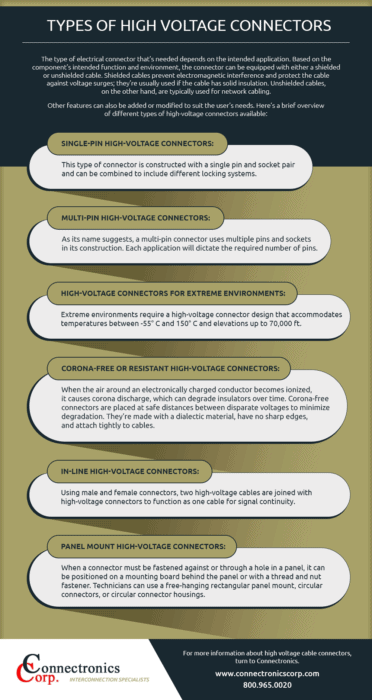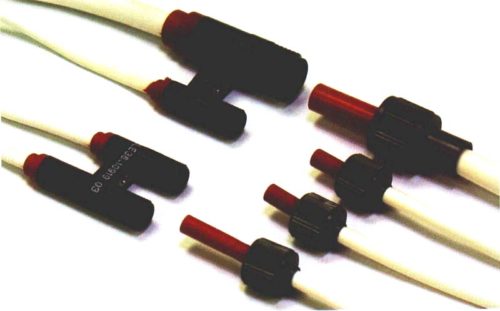Aerospace connectors, also known as avionics connectors, are specialized components utilized to connect electrical systems in aircraft. They are designed to withstand extreme environmental conditions, including high altitudes, temperature variations, and vibration. These connectors ensure reliable communication and power transmission between different onboard systems, such as navigation and control systems.
In this article, we will look at the types of avionics connectors, their applications, and their role in the demanding aerospace environment.
Roles of Connectors in the Aerospace Sector
Below are the different roles of connectors, each playing a vital part in ensuring the reliability and safety of aircraft systems:
Power Distribution
Connectors are crucial in power distribution within aircraft by ensuring that electrical power is delivered reliably to several systems. They connect power sources — such as generators or batteries — to critical systems, including avionics, lighting, and propulsion.
Data Transmission
High-speed and reliable data connectors are vital for maintaining the integrity and performance of aerospace systems. They ensure that data is transmitted with minimal loss and interference, essential for accurate navigation and effective aircraft control.
Signal Routing
Aerospace connectors route different signals, including control signals, sensor inputs, and feedback. They are vital for connecting sensors to data acquisition systems and control units, enabling the aircraft to respond accurately to operational commands.
Communication Systems
Robust connectors are essential for maintaining effective communication channels and ensuring safety and coordination. These components guarantee reliable and clear communication between the aircraft, ground control, and crew members.
Avionics Integration
Connectors support the integration of several avionics systems, enabling different components to work together. They also connect flight management systems, autopilots, and display panels, which allow for integrated operation and management of the aircraft’s avionics suite.
Maintenance and Upgrades
Different aerospace connectors facilitate the maintenance and upgrading of aerospace systems by enabling modular and easily replaceable connections. This modularity allows for quick repairs and replacements, minimizing downtime and maintaining the aircraft’s operational readiness.
Types of Aerospace Connectors and Their Applications
The following types of connectors contribute to the reliability and functionality of aerospace systems:
Circular Connectors
Circular connectors are widely used in aerospace applications due to their robust design and ease of use. They are cylindrical and can have multiple pins for connecting different electrical signals. These components are commonly used in avionics, control systems, and power distribution because they provide secure connections in harsh environments.
Rectangular Connectors
Rectangular connectors are designed to accommodate a high density of contacts in a compact space. They are mostly used in applications where space is limited and many connections are required. They are commonly found in cockpit displays, communication systems, and flight control units due to their reliability and space efficiency.
Radio Frequency (RF) Connectors
RF connectors are essential in aerospace applications for communication systems, radar, and navigation equipment. They are engineered to minimize signal loss and interference, ensuring clear and dependable communication. They come in several types — such as SMA, BNC, and TNC — each suitable for different frequency ranges and applications.
Fiber Optic Connectors
Fiber optic connectors are used in aerospace applications due to their ability to handle large amounts of data and their resistance to electromagnetic interference. They are commonly employed in data networks, in-flight entertainment, and advanced communication systems. These components also provide high bandwidth and are ideal for long-distance signal transmission in aircraft.
D-Sub Connectors
D-Sub connectors are known for their unique D-shaped metal shield, which provides mechanical stability and reduces electromagnetic interference. These components are utilized in avionics and other systems for data transmission and control signals. They also come in different sizes and pin configurations, making them versatile for aerospace applications.
Discover Reliable Solutions With Connectronics Today!
Connectronics stands at the forefront of aerospace connectivity, offering innovative solutions that ensure reliability, performance, and safety for your critical systems. Our connectors are engineered to meet the highest standards, which provide you with the peace of mind needed for seamless operations.
Contact us to learn how our cutting-edge technology can elevate your aerospace systems and drive your success! You can also request a quote to get started.











